Nutritional advice for cyclists is everywhere: on the internet, in training manuals and direct from fellow riders - the one capable of huge turns on the front of the group with a secret energy source in his bidon. Most recently, Graeme Obree has been extolling the virtues of simply rolling marzipan into balls and tucking them in a jersey pocket.
I am not a sports nutritionist but I take an interest in the subject. While I fully acknowledge that the brands we know and see on the cycle shop shelves have done an awful lot of research to ensure that the products they sell are designed and proven to help professional cyclists perform at their best over a three-week stage race, are they really of benefit to the average sportive entrant, who will be back at work on Monday morning and not back on the bike? Do I really need to be 5 minutes 45 seconds faster in a 40 mile time trial, as one brand claim their products will help me achieve, and with 15% more power? Unless "virtual man" is inspiring me to a particularly good effort, I'll be content to finish 10 minutes slower if I've enjoyed the ride, made new friends and watched the countryside pass by.
Advice from sports nutrition brands can be used to tailor your intake before, during and after a sportive, but at what cost? Energy gels are over a pound a shot, a bar is a similar price and if you use a powder drinks mix for fluids, the total cost to keep yourself sustained over 100 miles could be somewhere close to ten pounds on top of any entry fee. And so I ask myself, surely there is a cheaper way to feed myself on a sportive which provides me with all my energy requirements?
To kick things off a little science is required to understand why we need energy, where we source it and how we use it. We use the term carbohydrate as a bit of a catch-all phrase to cover what we really think of as simply fuel, but carbohydrates (or "carbs") is a term used to describe a group of organic compounds that include sugars, starches, celluloses and gums, all of which are an ideal source of energy for the body because they can be converted more readily into glucose, the form of sugar that's transported and used by the body. As a cyclist, we would look for an energy source that is quickly digestible to be used up as energy.
Of the four sources of carbohydrate mentioned above, starches and sugars are of most interest to the cyclist. Starches, commonly referred to as complex carbohydrates, are found in cereals, breads and pasta. Sugars are referred to as simple sugars and, well, you know where to find sugar! We also need to acquaint ourselves with the Glycemic Index (GI) because all foods have a GI based on a numerical scale which will indicate how fast and how high a particular food can raise our blood glucose (blood sugar) level.
What is also important when differentiating between various types of carbohydrates is how rapidly a particular carbohydrate will get metabolised into sugar and impact blood sugar (glucose) levels. A food with a low GI will typically prompt a moderate rise in blood glucose, while a food with a high GI may cause our blood glucose level to increase above the optimal level. During arduous activity, such as an ascent of Alpe d'Huez for example, those foods with a higher GI are essential to providing us with long and sustained energy to prevent the feared "bonk" or what runners refer to as hitting the wall.
The average person will be able to digest 1 gram of carbs per minute regardless of how much is consumed. Subsequently, most nutritionists would recommend a cyclist take on between 30-60g of carbs per hour to maintain a steady performance. Tempting though it might be to push on up the early climbs, or to jump into a group of higher standard than you are used to, efforts above your threshold can be very costly in stored carbohydrate and can leave you struggling at the end of the event. There is no standard awarded at the summit of the first hill, only at the end of the ride.
So we know that we need carbs, we know where to find them and we also know how much we need in a certain period. What's wrong with gels? If it was good enough for Chris Froome in this year's Tour de France to warrant a 20 second time penalty by sending Richie Porte back to the team car for one of those sachets, surely it's the optimum choice? Back to those various types of carbs we discussed: the sugars in a gel are used up quickly by the body if required but, like the starches, can also be retained in the insulin system for later use to prevent the body burning fat and not sugar.
I like gels, they are easy to carry and pack a powerful punch of carbohydrates. It may take some trials to find a brand you like in terms of taste and texture, but most importantly they give your legs a noticeable boost only a short period after consumption due to the minimal effort required to digest them. The golden rule of cycling nutrition is try nothing new on the day of the event, so do make sure you choose a brand or product that you have used before.
Regardless of how you plan your nutrition on the day, you will use up your energy stores at a rate faster than you can replace them because you are limited by the pace of your digestive system, thus it is important to conserve your stores and consider alternative sources of energy. Top up your energy stores using a little and often approach. This provides a steady supply of energy to the muscles and prevents gastrointestinal distress. A typical strategy is to consume energy bars or other solids during the less difficult parts of a race (flats) and gels during the tough parts (hills), but recognise that a gel won't have an immediate impact and although they are the quickest digestible source of carbs for a cyclist, the 30g of carbs in a typical gel could be supporting the average cyclist for anything up to half an hour.
So with all this in mind, and spurred by a need to find a low-cost energy source for the 2014 season, I hereby present the only Sportive.com approved flapjack recipe. These flapjacks have not been scientifically proven to save you any time on your next 100 mile sportive, but they will provide you with energy when you need it - and make you very popular with your cycling friends.
Paul's Sportive Flapjacks
(Makes 12 servings @ 33p per flapjack. 283 calories and 38g of carbs per serving)
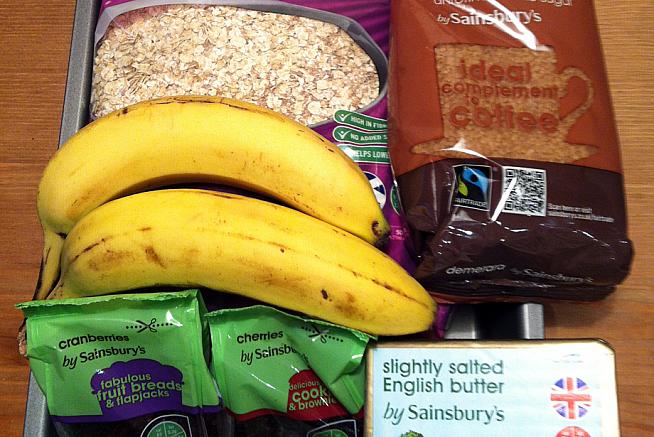
Ingredients:
125g of butter
125g of demerara sugar
2 tbs of golden syrup
2 chopped bananas
A handful of chopped cranberries
400g of porridge oats
Preheat the oven at 180 deg
Melt the butter and the sugar in a pan on low heat. After three or four minutes, add the golden syrup, stir a little more, then add the banana and the cranberries. Stir a little more and then fold in the oats a little at a time. The mixture will appear to be quite dry but don't worry, we're packing those carbs in nice and tight. Spoon the mixture into a baking tin approximately 20cm x 20cm x 4cm. Pop it in the preheated oven for 15 minutes, then remove it and score some lines into the surface of the flapjack to make portions. Leave it to cool for ten minutes, then treat yourself to a piece before it disappears...
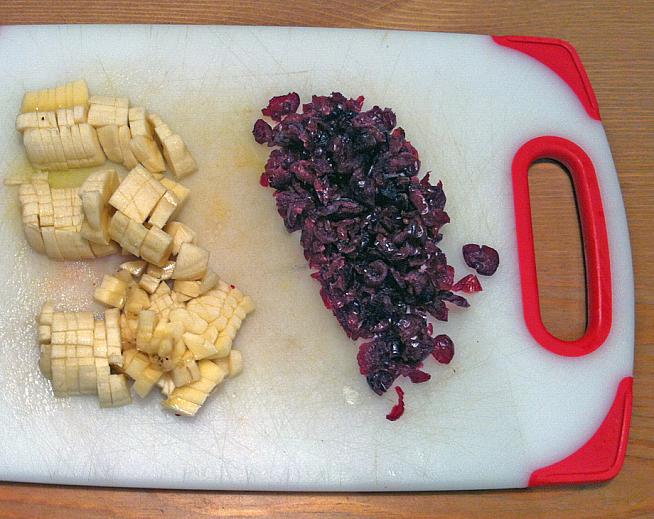
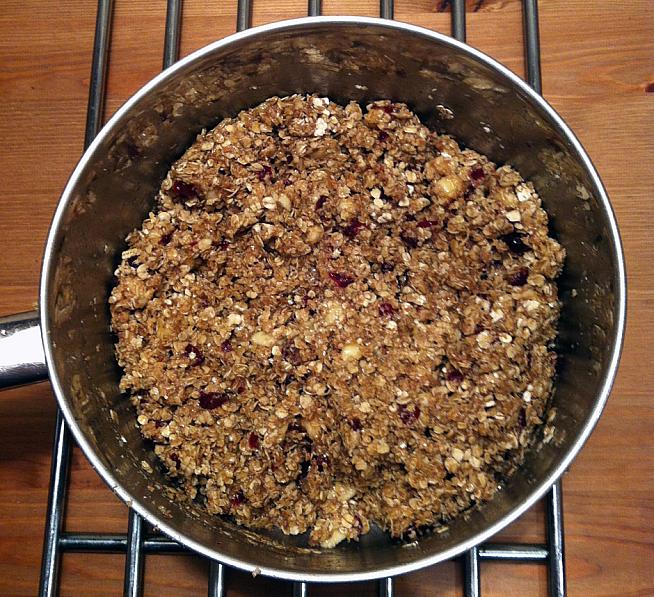
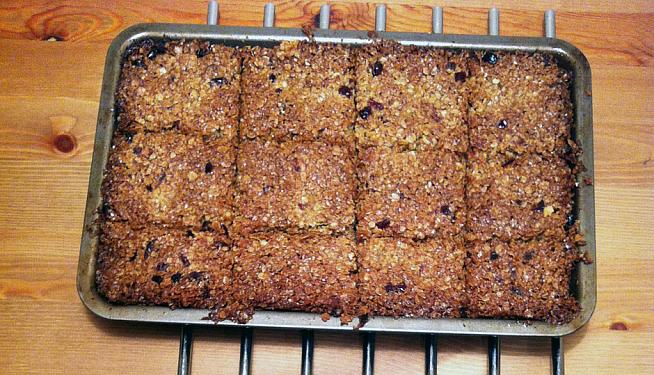
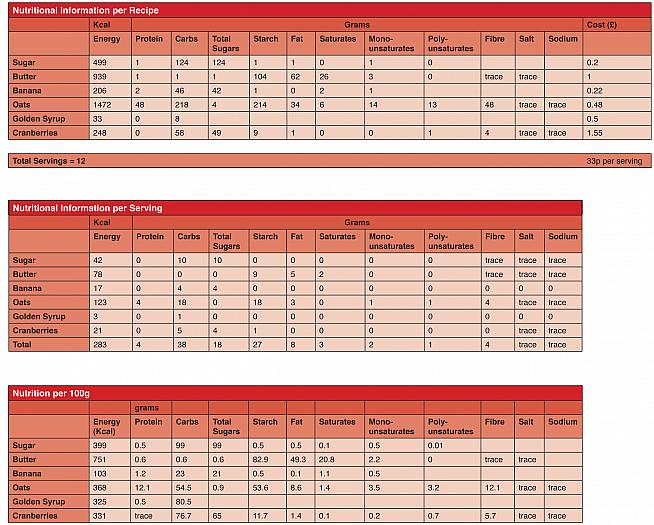
0 Comments





